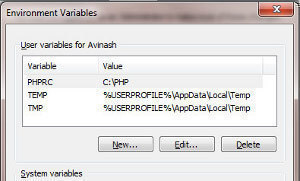How to Set an Environment Variable
An environment variable is a variable that describes the way a computer environment, such as an operating system, works. Environment variables can be used to manage a wide variety of environment settings and control how functions are carried out. For example, an environment variable can be used to specify the directory in which temporary files are stored or the functions a user interface tool is able to perform.
How Environment Variables Work
Environment variables are integrated into any software’s script before the software is released. Since environment variables control how software works, they are always added to a software’s script, despite its programming language. Environment variables in an operating system are considered core components of that operating system and cannot be changed while the operating system is running. Even when possible, it is highly discouraged to change an operating system’s environment variables as doing so can cause the operating system to fail. However, environment variables can be changed in a virtual environment or modified in a third party software other than the primary operating system.
How to Set an Environment Variable
Environment variables can be added to any program that is not currently running whenever the user is editing that program. This can be done by opening the program in any software editor, such as Visual Studio. Once the user has opened the program, he/she will see a long list of command strings that control how the software looks and functions. By adding an environment variable to this list in the appropriate place along with the corresponding data, the user can change how the software operates. A list of common environment variables can be found here.


Comments - No Responses to “How to Set an Environment Variable”
Sorry but comments are closed at this time.